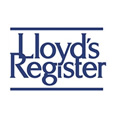Disaster Recovery as a Service (DRaaS) solutions make essential safeguarding of applications and data both more accessible and effective for small and large businesses alike.
Whether it be a natural disaster, human error, cyber-attack or hardware failure, an interruption to IT services can be catastrophic for businesses. To deal with the challenges associated with storing and potentially recovering large volumes of mission-critical data, organisations have a compelling option in DRaaS.
DRaaS is a cloud-based solution that provides near instant replication of your servers. In the case of downtime, whether scheduled or unscheduled, DRaaS enables you to failover to a copy of your infrastructure and failback to your original infrastructure when it’s ready, maintaining business continuity.
Whilst high-budget enterprises have typically had Disaster Recovery (DR) infrastructures in place for some time, the emergence of DRaaS yields several advantages that make the same capabilities possible for all businesses.
1. Disaster Recovery as a Service Reduces Costs
It’s simply not viable for many businesses to purchase, configure and manage a secondary site to failover to in case of disruption. It requires a huge upfront expenditure on hardware, plus unpredictable data centre operating costs.
DRaaS solutions are much more affordable. There are no upfront costs, but simply a monthly, manageable bill for leasing resources. Ongoing costs, such as those for electricity usage and maintenance, are the responsibility of the vendor.
You also only pay for what you use – a benefit that typifies the cloud – and there’s no need for overprovisioning, as would be required with a traditional DR infrastructure.
2. DRaaS Provides Access to Enterprise-Grade Protection
New technologies are revolutionising DR, and the speed and efficiency that can be achieved in data protection. For instance, advancements in virtualisation software have made Recovery Point Objectives (RPOs) and Recovery Time Objectives (RTOs) of just minutes and seconds affordable.
For organisations that choose to operate their own DR infrastructures, adopting new, advanced DR software poses both logistical and financial challenges.
Leading DRaaS solutions will include the latest software as standard, enabling the same simplified data replication, rapid RTOs and RPOs and comprehensive data protection that enterprises have access to.
3. DRaaS Refocuses Your Business Strategy
DR can be a burden that bogs down your IT department. It can involve extensively managing a secondary site, performing regular, intricate failover tests and reviewing recovery capabilities to meet compliance requirements. This distracts IT from core strategy and responsibilities that develop your business.
More than the sum of its parts
DRaaS solutions provide access to new technologies, technologies that can automatically test and invoke your DR infrastructure, enabling your internal team to focus and prioritise tasks that are central to your long-term business strategy. As data security becomes an increasingly important responsibility for organisations of all sizes, DRaaS offers affordable, yet complete protection.
A DRaaS solution, as an alternative to configuring and managing your own DR infrastructure, is a formidable option for any business looking to exploit the efficiencies and innovation of the cloud.
To find out more about DRaaS from BTL click here or download our data sheet




















